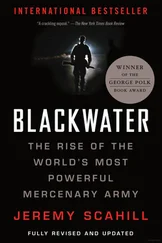The strategies that fueled this force’s ascent would become a model for a secret program that Rumsfeld would build at the Pentagon. Rumsfeld was watching as the CIA became the alpha dog in the GWOT under Cheney’s direction. Rumsfeld became determined to break what he called the Pentagon’s “near total dependence on CIA” and to build an iron curtain around the most sensitive activities of America’s most elite warriors. This project was envisioned as a parallel intelligence operation to the CIA, but also as the most effective kill and capture machine the world had ever seen—one that, by its very nature, would answer to no one but the president and his inner circle.

2. Anwar Awlaki: An American Story
THE UNITED STATES AND YEMEN, 1971–2002—The world was a different place when George W. Bush was campaigning for president in 2000. The date 9/11 held no particular significance for Americans and Osama bin Laden was not the center of attention for the US military and intelligence machine. For many Arabs and Muslims, the Clinton era had resulted in crushed hopes that the Palestine issue would be negotiated in their favor. Many Muslim Americans saw Bush, not Clinton’s vice president, Al Gore, as their best hope in the 2000 presidential election. But it wasn’t just Palestine. Many Muslims also shared the conservative social values embraced by evangelical Christians like Bush, on issues of marriage, gay rights and abortion. One such American Muslim was a young imam from New Mexico named Anwar al Awlaki. “Yes, we disagree with a lot of issues when it comes to the foreign policy of the United States,” Awlaki said in 2001. “We are very conservative when it comes to family values. We are against the moral decay that we see in the society. But we also cherish a lot of the values that are in America. Freedom is one of them; the opportunity is another.”
In many ways, Awlaki’s story was a classic tale of people from a faraway land seeking a better life in America. His father, Nasser Awlaki, was a brilliant young student from Yemen who came to the United States on a Fulbright scholarship in 1966 to study agricultural economics at New Mexico State University. “I read a lot about the United States when I was only fifteen years old,” Nasser recalled. “My impression of the US, when I was young boy in elementary and junior high school, was that America is a land of democracy, and the land of opportunities. I yearned all the time to have my studies in the United States of America.” When he arrived, Nasser went first to Lawrence, Kansas, to study English and then headed for New Mexico. “I wanted to know and meet people of the New World who built one of the most progressive nations the world has ever known,” he declared in an essay introducing himself to fellow classmates in the United States. Nasser wrote that he wanted to get an education “in order to help my people become more progressive and advanced.” He had married right after he completed high school but could not afford to bring his wife, Saleha, to live with him in the United States on his $167 monthly stipend. “Because I wanted to get my wife back, I finished my schooling for a bachelor’s degree in agriculture in only two years and nine months,” he told me when we met in his large, modern home in Sana’a, the Yemeni capital in December 2011. After graduating, Nasser headed back to Yemen, got his wife a visa and returned to Las Cruces, New Mexico, where he completed his master’s degree. On April 22, 1971, their baby boy, Anwar, was born. “In those days, it was OK to distribute cigars to your fellow graduate students,” he laughed. “It was written on it: ‘It’s a Boy.’ And it was an unbelievable day for me, when Anwar was born. In Las Cruces Memorial Hospital.”
Nasser wanted to raise Anwar as an American, not just in nationality but also in character. In 1971, when the family moved so Nasser could complete his PhD at the University of Nebraska, they signed young Anwar up for swimming lessons at the local YMCA. “He was actually swimming when he was only two and a half years old,” Nasser recalled. “And he was very brilliant at it.” As we sat in his living room at his home in Sana’a, Nasser pulled out the family photo album and showed me pictures of little Anwar, posed on a rug in a staged picture taken at a shopping mall. Eventually, the family settled down in St. Paul, where Nasser got a job at the University of Minnesota and enrolled Anwar at Chelsea Heights Elementary School. “He was an all-American boy,” he said, showing me a picture of Anwar in his classroom. Anwar, with long, flowing hair, is smiling as he points out Yemen on a globe. Another family photo shows a lanky adolescent Anwar wearing sunglasses and a baseball hat at Disneyland. “Anwar was really raised like any other American boy, he used to like sports and he was very brilliant at school, you know. He was a good student, and he participated in all kinds of sports.”
In 1977, Nasser decided to move the family back to Yemen—for how long he did not know. Nasser believed he had an obligation to use his US education to help his very poor home country. He knew that he wanted Anwar to return to the United States one day for university, but he also believed it would be good for the young boy to learn about his family’s homeland. So, on the last day of 1977, the family returned to Sana’a. Six-year-old Anwar could barely speak Arabic, though he quickly picked it up. He had risen to number four in his class in Sana’a by the end of his first semester and within a year was speaking Arabic with ease. Nasser and his colleagues eventually started a private school that taught in both English and Arabic. Anwar was in the first class, along with Ahmed Ali Abdullah Saleh, the son of Yemen’s president. The two boys would be classmates for eight years. Ahmed Ali would go on to become one of the most feared men in Yemen and the head of its Republican Guard. Anwar, meanwhile, set off on a course to follow in his father’s academic footsteps.
Anwar would spend the next twelve years in Yemen, as his father became closer to his American friends in Sana’a. Nasser and several other US- and British-educated Yemenis worked with the US Agency for International Development (USAID) and started a college of agriculture with $15 million in funding from the United States. In 1988, Nasser was appointed Yemen’s minister of agriculture. After Anwar finished high school in Yemen, a colleague of Nasser’s from USAID offered to help find a good college for Anwar in the United States. Nasser wanted his son to study “civil engineering, particularly regarding hydraulics, and the problem of water resources in Yemen. Because Yemen is really suffering from the shortage of water.” His USAID friend suggested Colorado State University (CSU) and helped Anwar get a US government scholarship. In order for Anwar to get the scholarship, he had to have a Yemeni passport. “At that time, I was just a regular university professor, I didn’t have the finances to send my son to study in the United States at my own expense,” recalled Nasser. “So the American USAID director told me it is easy, if Anwar can get a Yemeni passport, then he will be qualified for the scholarship from USAID. So, we got Anwar a Yemeni passport.” The Yemeni authorities listed his birthplace as Aden, Yemen. This would later cause trouble for Anwar.
ANWAR LANDED AT O’HARE AIRPORT in Chicago on June 3, 1990, and then moved to Fort Collins, Colorado, to study civil engineering. “His dream, as a young man, was really to finish his studies [in the United States] and come and serve in Yemen,” said Nasser. During Anwar’s first year at the university, the United States launched the Gulf War against Iraq. Nasser recalled a phone call he received from Anwar when the US bombs started falling on Baghdad. He was watching Peter Arnett, the famed CNN correspondent, reporting from the Iraqi capital. “He saw pictures from CNN that it was a complete blackout over Baghdad. So Anwar was thinking that Baghdad was really, completely destroyed. Baghdad has a lot of cultural meaning to Muslims, because it was the site of the Abbasid dynasty. So he was really disappointed at what happened. And so at that time he started really to worry about general Muslim problems.”
Читать дальше













